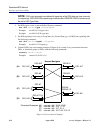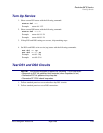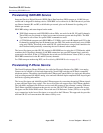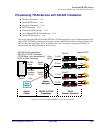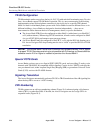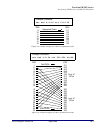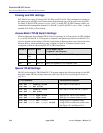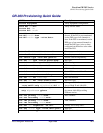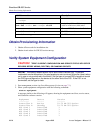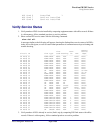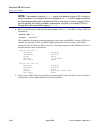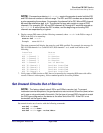
10-6 August 2003 Access Navigator - Release 1.8
Provision GR-303 Service
Provisioning TR-08 Service with GR-303 Translation
TR-08 Configuration
TR-08 terminals can have up to four shelves (A, B, C, D) with each shelf terminating up to 24 voice
lines. Access Banks support TR-08 Mode I operation. This is a non-concentrating, non-blocking
implementation where each telephone connection is physically tied to a specific DS0 channel.
Mode I is ideal for distributed phone systems with Access Banks located on different floors or in
different buildings. Access Banks are designed to function independently — there are no
interconnection cables between shelves for management, alarms, or power distribution.
l The Access Bank I/TR-08 can be configured as either Shelf A (with alarms) or as Shelf B, C,
or D (without alarms). When using GR-303 translation, all units can be configured as Shelf
A to get AT&T 54016 performance report message alarms.
l An Access Bank II must be configured as Shelf B, C, or D, with the DS1 link framing set to
D4. Access Navigator DS1 drop framing must be set to “slc96” to provide GR-303 to TR-08
translation.
NOTE: The Access Bank II must have Controller card software version 2.26 or higher
to support TR-08. Remote provisioning is not possible with D4 framing, so Remote Monitor
software version 2.04 or higher is needed to provision the Access Bank II.
Special POTS Cards
Access Banks can have one or two Special POTS (SPOTS) cards, each providing 12 analog voice
channels with TR-08/SLC-96 compatible AB bit signaling. Carrier Access’ SPOTS cards provide,
on a per channel basis, either loopstart Single Party Ringing (SPR) or groundstart Universal Voice
Grade (UVG) service with CLASS® features.
Signaling Translation
The Access Navigator automatically performs GR-303 to TR-08 translation of the AB signaling bits
when the drop DS1s are set to “slc96” framing.
CRV Numbering
TR-08 systems use an odd-even numbering scheme (Figure 10-4) when assigning call reference
values (CRVs) to subscriber DS0s. If desired, the Access Navigator can also assign CRVs in
sequential order (Figure 10-3).



